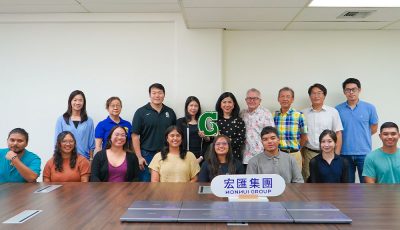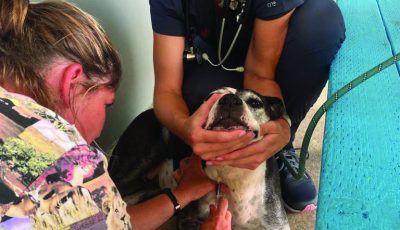Erosion threatens Micro Beach Pavilion
Micro Beach is still eroding like nobody’s business.
Casual visitors to Micro Beach can see the change happening. Sand is being swept from the coast to Smiling Cove and the cove’s western entrance is now slowly being closed up by this sand.
The National Parks Service, which runs the American Memorial Park, is not unaware of the problem.
“The beach is eroding, with shoreline erosion undermining trees, claiming a beachside sidewalk, and threatening a popular open air pavilion as the sand and the other material moves through the area trending north to Smiling Cove,” said Jim Richardson, superintendent for both the War in the Pacific National Historical Park in Guam and American Memorial Park.
“The reality is this popular beach will probably keep eroding and nature may soon claim the pavilion at Micro Beach,” he added.
Shoreline erosions occur all the time, but erosion at American Memorial Park has been noticeable over the last three to five years. Causes of the erosion are storms, currents, and the possibility of a global climate change.
If not mitigated, there is a possibility that American Memorial Park will lose half of its land in probably 30 to 50 years due to this constant erosion.
But according to Richardson, “If our experience in interfering with nature has taught us anything, it is that for every action we take, there is a consequence down the road.”
National Park Services manages the lands at Micro Beach with technical agreement with the CNMI that essentially leases 177 acres of land to operate the park.
Although they are very concerned with the losses of shore lands, facilities, historical sites, memorials, vegetations, and natural habitats, any action and response that may be taken to arrest the erosion will have to be a joint effort with all partners to ensure that any action will not affect the rest of the island’s resources.
“NPS cannot just put in mechanical solutions without a plan that includes consideration to the hotels to the south, the marina operations at Smiling Cove, and other key resources in the area,” said Richardson.
He said that NPS has asked for urgent funding of a modeling study that will project what the area will be like in just a few years with no action, and what it might be like with human-induced mitigation.
According to the Coastal Resources Management’s website, shoreline erosion is a tourist industry and marina concern.
According to a CRM study on the American Memorial Park, there are 19 transect sites including the park, nearly one mile of coastline, man-made structures and wharfs that are deteriorating. Very soon, if nothing is done, the Micro Beach pavilion will be next.
According to Kaitlin Mattos, watershed coordinator of the Bureau of Environmental and Coastal Quality, the beaches of Garapan constitute one of Saipan’s most valuable resources.
Most of the West Tapochao Central subwatershed is characterized by sandy, gently sloping beaches that serve as a transition zone between terrestrial and marine ecosystems and a focal point of recreation and economic viability.
Based on the shoreline erosion mapping and assessments done in the Garapan area, the shoreline extending from the southern boundary area (Garapan Fishing Base) to the drainage outlet south of Fiesta Resort and Spa have experienced relative stability over the past two decades.
In contrast, the north and northeast extent of Garapan’s shoreline “is very dynamic.” This section includes the beach fronts of Fiesta Resort & Spa, Hyatt Regency Saipan, and American Memorial Park.
“It has been subject to significant change on decade, annual, and semi-annual timescales,” according to the BECQ’s Garapan Conservation Action Plan.
A 2013 study by CRM assessed shoreline data from 2003 through 2011 and confirmed previously identified trends of beach loss along the western shore of American Memorial Park, along with significant accretion to the northeast of the park.
“Although coastlines should be expected to shift over time, significant erosion or accretion could greatly affect natural and cultural resources within the watershed area,” the study states.
According to CRM, the best solutions is to consider the permanency of the reference point by flagging it continually, informing the tops and downs of locations, taking pictures frequently, recording GPS coordinates, and acquiring dated imagery.



























